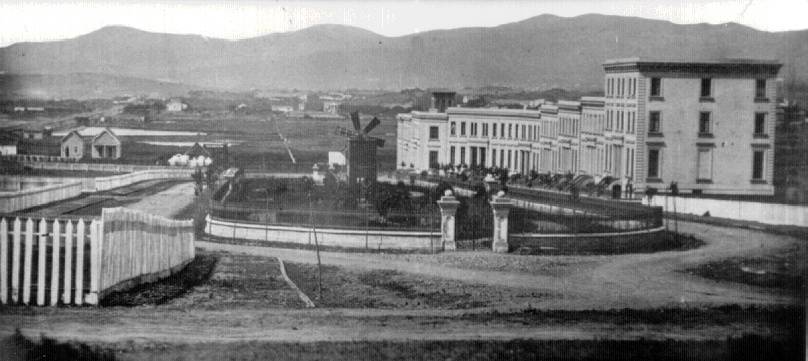South Park 1853 Westerly View: Difference between revisions
m (1 revision(s)) |
m (categories) |
||
| Line 3: | Line 3: | ||
'''South Park, 1853: San Francisco's first planned development, looking southwest from 2nd Street (Rincon Hill), Twin Peaks and Mt. Davidson in background.''' | '''South Park, 1853: San Francisco's first planned development, looking southwest from 2nd Street (Rincon Hill), Twin Peaks and Mt. Davidson in background.''' | ||
''' '''Built by capitalist, George Gordon, shortly after the gold rush, South Park was designed by George H. Goddard, Esq., an Englishman, and featured several lavish mansions around an "orchard." According to historian Albert Shumate, who assembled the book South Park and Rincon Hill (Windgate Press), the oval shape was part of what was known as the "English Crescent Design," and was intended to promote neighborliness. | ''' '''Built by capitalist, George Gordon, shortly after the gold rush, South Park was designed by George H. Goddard, Esq., an Englishman, and featured several lavish mansions around an "orchard." According to historian Albert Shumate, who assembled the book ''South Park and Rincon Hill'' (Windgate Press), the oval shape was part of what was known as the "English Crescent Design," and was intended to promote neighborliness. | ||
photo courtesy San Francisco History Room, San Francisco Public Library'' | |||
[[THE RAILROAD COMES TO SF? |Prev. Document]] [[SOUTH PARK |Next Document]] | |||
[[ | [[category:Neighb:SOMA]] [[category:real estate]] [[category:1853]] | ||
Revision as of 22:02, 30 March 2008
South Park, 1853: San Francisco's first planned development, looking southwest from 2nd Street (Rincon Hill), Twin Peaks and Mt. Davidson in background.
Built by capitalist, George Gordon, shortly after the gold rush, South Park was designed by George H. Goddard, Esq., an Englishman, and featured several lavish mansions around an "orchard." According to historian Albert Shumate, who assembled the book South Park and Rincon Hill (Windgate Press), the oval shape was part of what was known as the "English Crescent Design," and was intended to promote neighborliness.
photo courtesy San Francisco History Room, San Francisco Public Library

